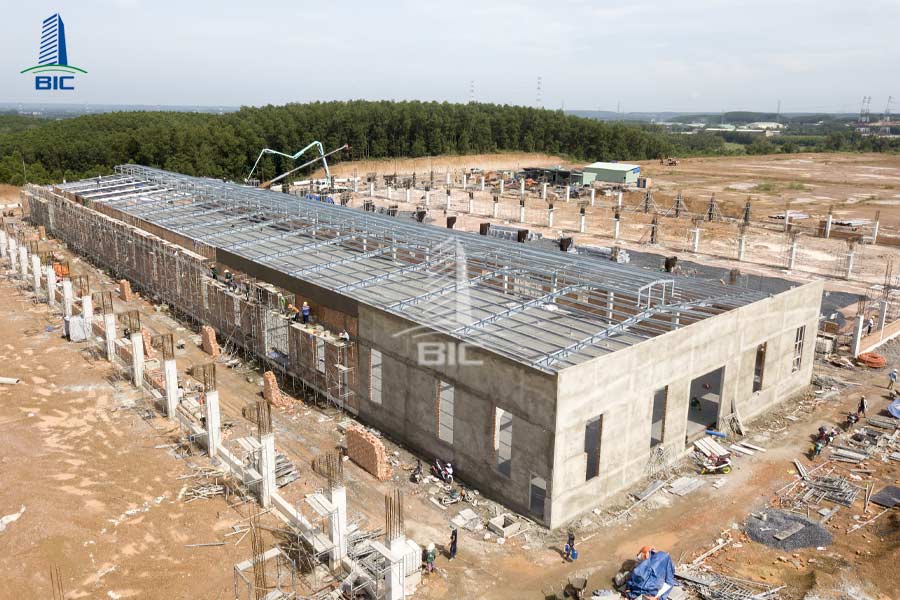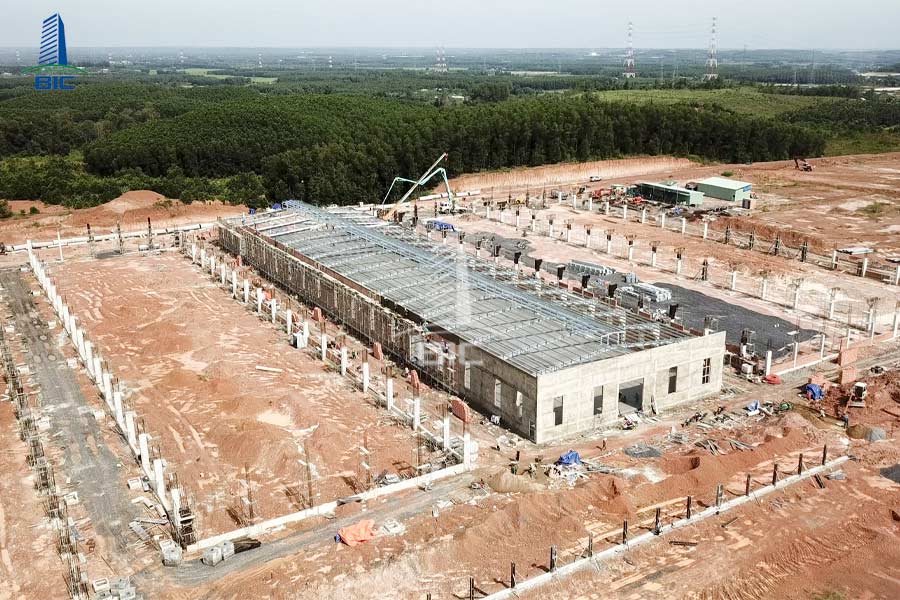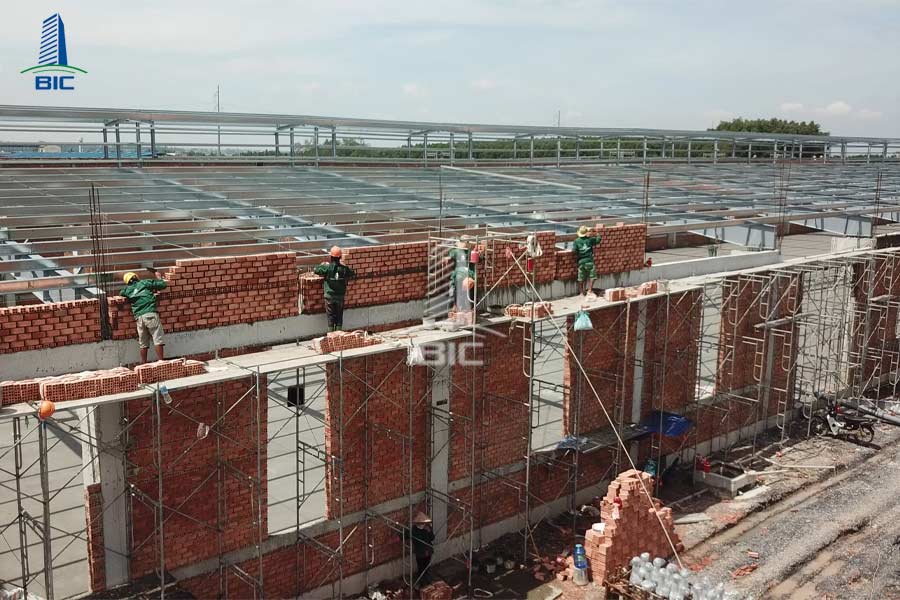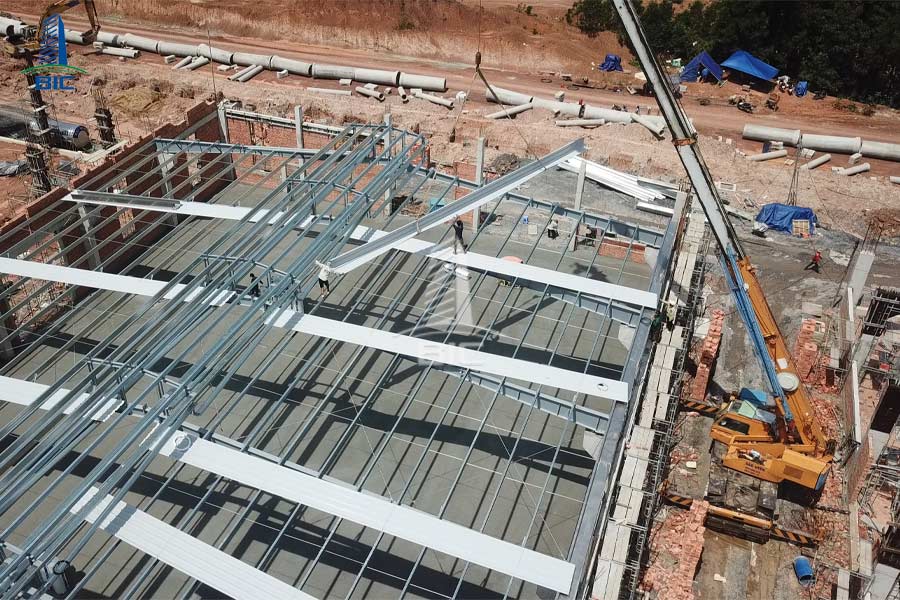
With rising production demands, businesses are constantly seeking construction solutions that are fast, cost-effective, and still ensure quality and long-term durability. While reinforced concrete used to be the default choice, today, steel structure factories are becoming a top trend thanks to their outstanding advantages many of which investors had never considered before.
Not only do they help shorten construction timelines, but steel structure factories also offer flexibility in functionality, easy scalability, and optimized investment costs. This marks a major step forward in construction design, creating opportunities for businesses to accelerate production, improve operational efficiency, and gain a competitive edge in the market.
One of the most significant advantages of steel structure factories is the ability to dramatically shorten construction time. Unlike traditional methods that rely heavily on concrete pouring, curing, and on-site processing, steel components are pre-fabricated in factories and then transported for direct assembly at the site.
This process can reduce construction time by 30–50%, allowing factories to go into operation faster and seize business opportunities on time. This is a crucial competitive edge in industries like manufacturing, logistics, and e-commerce, where market demand changes rapidly.
Additionally, the shortened timeline helps reduce project management costs, labor expenses, and indirect costs delivering clear financial efficiency from the very beginning.

Beyond speed, steel structure factories help businesses optimize costs right from the investment stage. Because steel is lighter than reinforced concrete, foundation loads are significantly reduced, cutting down expenses for foundation treatment a major cost component in factory construction.
Moreover, since steel components are pre-manufactured, material waste and on-site labor costs are minimized. This enables better budget control and helps prevent unexpected expenses.
In the long run, operational costs are also reduced thanks to better insulation, ventilation, and easy integration of energy-saving solutions. The steel frame design also allows for quick expansions or modifications without costly demolition or rebuilding.
All these factors combined make steel structure factories a far more cost-effective solution compared to traditional methods.

Another key reason steel structure factories are gaining popularity is their exceptional strength and long service life. Steel frames are engineered to withstand heavy loads from large machinery systems to high-intensity production activities.
In Vietnam’s harsh climate, steel structures demonstrate superior resistance to storms, vibrations, and even earthquakes, compared to traditional materials. When coated with anti-corrosion paint and maintained regularly, these factories can remain durable for decades without significant degradation.
Thanks to their design flexibility, engineers can easily tailor structures for different industries from cold storage and logistics warehouses to high-tech factories ensuring both durability and optimized operational safety.

A unique advantage of steel structure factories is their high adaptability in both design and functional use. With the ability to span large distances with fewer interior columns, steel frames create spacious layouts, making it easier to arrange production lines, storage areas, or auxiliary offices.
This flexibility allows the factory to support diverse industries from textiles and food processing to precision engineering and logistics. Businesses can maximize floor space utilization and easily expand or renovate facilities when demand changes, without expensive demolition.
Steel structures also support the integration of modern technologies such as solar energy systems, IoT-based production management, natural ventilation, and daylighting helping reduce operational costs while enhancing sustainability.

Beyond advantages in speed, cost, and functionality, steel structure factories excel in meeting increasingly strict safety standards in industrial construction and operation. Steel frames are designed according to modern engineering codes, ensuring load-bearing capacity, fire resistance, storm protection, and compliance with occupational safety requirements.
Importantly, in today’s sustainability-driven environment, steel structures offer clear benefits. They can easily integrate green solutions like solar power systems, insulated walls, natural ventilation, and rainwater harvesting. This not only helps businesses cut operating expenses but also supports ESG compliance and environmental responsibility—factors increasingly valued by international investors.
The combination of safety, durability, and sustainability makes steel structure factories a strategic choice ensuring stable production while delivering long-term value.
It is clear that steel structure factories are more than just a construction trend, they are a strategic solution helping businesses save costs, shorten construction timelines, ensure safety, and meet modern sustainability standards. Choosing steel frames in factory design and construction not only provides immediate benefits but also creates long-term value, enabling businesses to stay proactive in expansion and production efficiency.
If you are planning to build a factory, consider adopting steel structures from the very beginning to fully leverage their advantages. Contact BIC’s team of experts for detailed consultation from design and material selection to construction and handover. We are committed to accompanying you in creating an optimal, sustainable, and high-performance facility that delivers outstanding returns on investment.